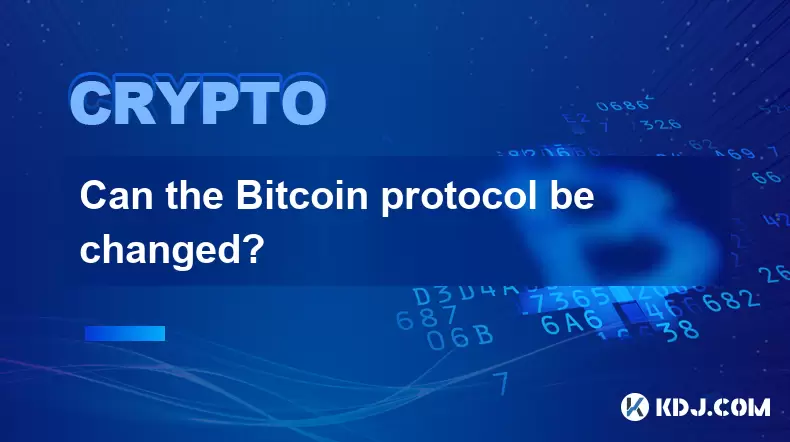-
 bitcoin
bitcoin $122090.672462 USD
1.59% -
 ethereum
ethereum $4493.758974 USD
0.56% -
 xrp
xrp $3.033145 USD
0.65% -
 tether
tether $1.000629 USD
0.00% -
 bnb
bnb $1169.854250 USD
7.07% -
 solana
solana $230.954786 USD
-0.19% -
 usd-coin
usd-coin $0.999785 USD
0.00% -
 dogecoin
dogecoin $0.256108 USD
-1.12% -
 tron
tron $0.342333 USD
-0.12% -
 cardano
cardano $0.859632 USD
-0.10% -
 hyperliquid
hyperliquid $48.932146 USD
-2.25% -
 chainlink
chainlink $22.345466 USD
-1.29% -
 ethena-usde
ethena-usde $1.000217 USD
-0.03% -
 avalanche
avalanche $31.203456 USD
1.93% -
 sui
sui $3.579145 USD
1.05%
How to avoid Bitcoin scams?
Bitcoin scams often use fake websites, phishing, and Ponzi schemes to steal funds, so always verify URLs, research investments, and safeguard private keys.
Jul 07, 2025 at 09:49 am

Understanding the Landscape of Bitcoin Scams
Bitcoin, as a decentralized digital currency, has opened new avenues for financial freedom and innovation. However, its rising popularity has also attracted malicious actors seeking to exploit unsuspecting users through various scams. Understanding how these scams operate is crucial to protecting your assets. Scammers often rely on social engineering tactics, fake websites, phishing attempts, or fraudulent investment schemes to gain access to private keys or funds.
One common type of scam involves impersonating legitimate cryptocurrency exchanges or wallet providers. These fake platforms may look nearly identical to their real counterparts but are designed to steal login credentials or private keys. Users must always verify the URL of any website they interact with and avoid clicking on suspicious links, especially those shared via email or social media.
Another prevalent form of Bitcoin fraud includes Ponzi schemes disguised as high-yield investment programs. These scams promise unrealistic returns in short periods to entice investors. It's essential to perform due diligence before committing funds, including researching the team behind the project and verifying the legitimacy of the platform.
Securing Your Wallet and Private Keys
The cornerstone of Bitcoin security lies in safeguarding your wallet and private keys. A private key is essentially the password that grants access to your Bitcoin holdings, and losing control of it means losing your funds permanently. To mitigate this risk, it’s recommended to use hardware wallets instead of online or software-based wallets whenever possible.
When setting up a wallet, always ensure you store recovery phrases offline in a secure location. Never share these phrases with anyone, not even individuals claiming to be customer support representatives from wallet services. Additionally, enable two-factor authentication (2FA) wherever available to add an extra layer of protection against unauthorized access.
For advanced users who hold significant amounts of Bitcoin, consider implementing multi-signature wallets. These require multiple approvals before a transaction can be executed, significantly reducing the chances of theft. Multi-sig technology distributes control among different devices or trusted parties, making it harder for attackers to compromise all required keys simultaneously.
Recognizing Phishing Attempts and Fake Offers
Phishing attacks remain one of the most effective methods scammers use to steal Bitcoin. These typically involve deceptive emails, messages, or websites that mimic official communications from well-known crypto services. Victims are tricked into entering sensitive information such as passwords or seed phrases under false pretenses.
To combat phishing, always double-check sender addresses when receiving emails related to cryptocurrency accounts. Legitimate companies will never ask for personal details via unsolicited messages. Also, hover over links before clicking them to confirm they lead to genuine domains associated with the service mentioned.
Fake giveaways or “airdrop” scams have become increasingly sophisticated. They often claim affiliation with prominent figures in the crypto space like Elon Musk or Vitalik Buterin, offering free coins if recipients send a small amount first. These offers are almost always fraudulent; no reputable individual or organization would request payment upfront for free tokens.
Avoiding Fraudulent Investment Schemes
Many fraudulent investment opportunities masquerade as innovative blockchain projects promising guaranteed profits. Scammers frequently utilize aggressive marketing strategies across social media platforms and forums to lure victims into these schemes. Be wary of any proposition that guarantees returns without explaining underlying risks thoroughly.
Legitimate investments usually provide transparent whitepapers detailing technical specifications, roadmap timelines, and tokenomics structures. If such documentation isn't readily available or appears hastily put together, treat it with skepticism. Conduct thorough research by consulting independent reviews, checking developer backgrounds, and examining community feedback before investing.
Additionally, some Ponzi schemes recruit affiliates using referral programs incentivizing participants to bring more people into the fold. While referrals aren't inherently bad, excessive emphasis on recruitment rather than product value should raise red flags. Always prioritize understanding what exactly you're investing in rather than focusing solely on potential earnings from recruiting others.
Verifying Transactions Before Sending Funds
Before executing any Bitcoin transaction, take time to review all details carefully. Even minor errors in recipient addresses can result in irreversible loss since blockchain transactions cannot be undone once confirmed. Use features provided by wallets that allow scanning QR codes instead of manually typing long strings of characters prone to typos.
Be cautious about urgent requests demanding immediate transfers—scammers often create artificial urgency to pressure victims into acting impulsively without proper verification. If someone contacts you unexpectedly requesting cryptocurrency payments for goods/services claimed to be urgently needed, pause and investigate further before proceeding.
Consider maintaining separate wallets for daily spending versus long-term storage ('cold storage'). This segregation minimizes exposure should one account get compromised accidentally during routine transactions. Regularly update software versions within your chosen wallet applications to benefit from enhanced security patches released periodically by developers.
Frequently Asked Questions
What should I do if I've already fallen victim to a Bitcoin scam?Immediately cease all communication with the scammer and report the incident to local authorities along with relevant cybercrime units handling financial fraud cases. Unfortunately, recovering stolen Bitcoins is extremely difficult due to the irreversible nature of blockchain transactions. However, reporting helps build patterns aiding law enforcement efforts against organized crime networks operating within this space.
Are there specific tools available to detect fake cryptocurrency websites?Yes, several browser extensions exist which flag known phishing sites automatically upon visitation attempts. Tools like MetaMask’s phishing detector or Google Chrome’s built-in Safe Browsing feature serve useful roles here. Always cross-reference URLs against official company announcements published directly on verified channels like official blogs or social media profiles maintained by authentic teams behind respective brands.
How can I safely participate in airdrops without falling prey to scams?Legitimate airdrop campaigns announce themselves clearly through official channels belonging exclusively to project founders/developers involved. Avoid participating unless you've validated authenticity independently beyond just promotional tweets retweeted widely across random accounts. Never connect wallets unnecessarily nor approve permissions granting broad access rights unless fully aware of implications tied thereto.
Disclaimer:info@kdj.com
The information provided is not trading advice. kdj.com does not assume any responsibility for any investments made based on the information provided in this article. Cryptocurrencies are highly volatile and it is highly recommended that you invest with caution after thorough research!
If you believe that the content used on this website infringes your copyright, please contact us immediately (info@kdj.com) and we will delete it promptly.
- BlockDAG, DOGE, HYPE Sponsorship: Crypto Trends Shaping 2025
- 2025-10-01 00:25:13
- Deutsche Börse and Circle: A StableCoin Adoption Powerhouse in Europe
- 2025-10-01 00:25:13
- BlockDAG's Presale Buzz: Is It the Crypto to Watch in October 2025?
- 2025-10-01 00:30:13
- Bitcoin, Crypto, and IQ: When Genius Meets Digital Gold?
- 2025-10-01 00:30:13
- Stablecoins, American Innovation, and Wallet Tokens: The Next Frontier
- 2025-10-01 00:35:12
- NBU, Coins, and Crypto in Ukraine: A New Yorker's Take
- 2025-10-01 00:45:14
Related knowledge

Why is Bitcoin considered a revolutionary technology?
Aug 12,2025 at 08:29pm
Decentralization and the Elimination of Central AuthoritiesThe core innovation behind Bitcoin lies in its decentralized architecture, which fundamenta...

Why is Bitcoin considered a revolutionary technology?
Aug 10,2025 at 07:42pm
Decentralized Architecture and Trustless TransactionsBitcoin is considered revolutionary because it introduced a decentralized architecture that opera...

What are the key features of Bitcoin?
Aug 10,2025 at 02:50am
Decentralization and Peer-to-Peer NetworkOne of the most defining characteristics of Bitcoin is its decentralized nature. Unlike traditional financial...

Can the Bitcoin protocol be changed?
Aug 07,2025 at 01:16pm
Understanding the Bitcoin ProtocolThe Bitcoin protocol is the foundational set of rules that govern how the Bitcoin network operates. It defines every...

Can the Bitcoin protocol be changed?
Aug 11,2025 at 01:01am
Understanding the Bitcoin Protocol StructureThe Bitcoin protocol is the foundational set of rules that govern how the Bitcoin network operates. These ...

What happens to Bitcoin transactions once they are confirmed?
Aug 09,2025 at 05:22am
Understanding Bitcoin Transaction ConfirmationWhen a Bitcoin transaction is initiated, it is broadcast to the network and placed in a pool of unconfir...

Why is Bitcoin considered a revolutionary technology?
Aug 12,2025 at 08:29pm
Decentralization and the Elimination of Central AuthoritiesThe core innovation behind Bitcoin lies in its decentralized architecture, which fundamenta...

Why is Bitcoin considered a revolutionary technology?
Aug 10,2025 at 07:42pm
Decentralized Architecture and Trustless TransactionsBitcoin is considered revolutionary because it introduced a decentralized architecture that opera...

What are the key features of Bitcoin?
Aug 10,2025 at 02:50am
Decentralization and Peer-to-Peer NetworkOne of the most defining characteristics of Bitcoin is its decentralized nature. Unlike traditional financial...

Can the Bitcoin protocol be changed?
Aug 07,2025 at 01:16pm
Understanding the Bitcoin ProtocolThe Bitcoin protocol is the foundational set of rules that govern how the Bitcoin network operates. It defines every...

Can the Bitcoin protocol be changed?
Aug 11,2025 at 01:01am
Understanding the Bitcoin Protocol StructureThe Bitcoin protocol is the foundational set of rules that govern how the Bitcoin network operates. These ...

What happens to Bitcoin transactions once they are confirmed?
Aug 09,2025 at 05:22am
Understanding Bitcoin Transaction ConfirmationWhen a Bitcoin transaction is initiated, it is broadcast to the network and placed in a pool of unconfir...
See all articles










































































